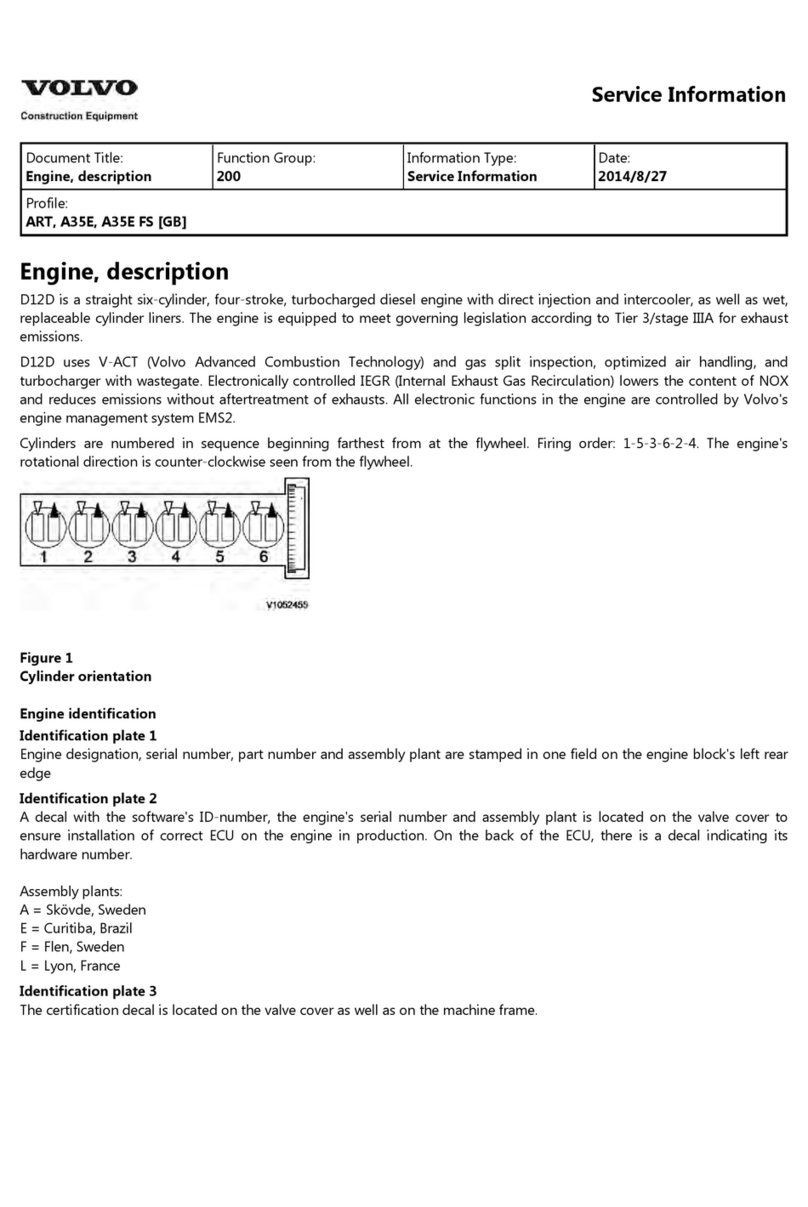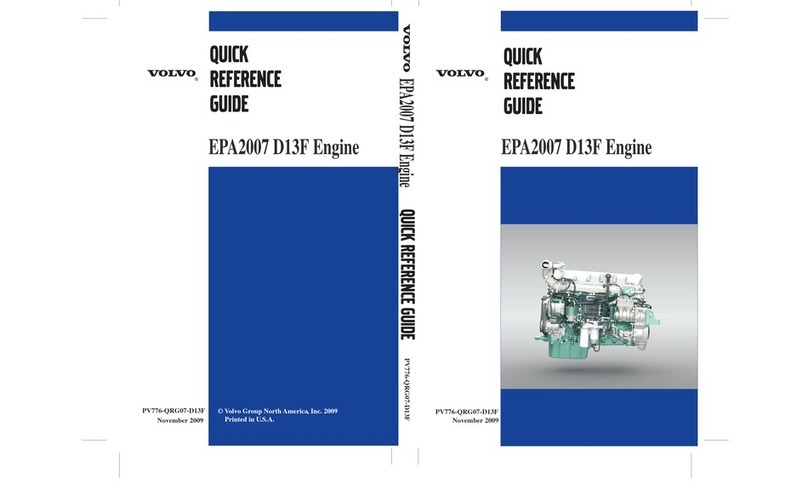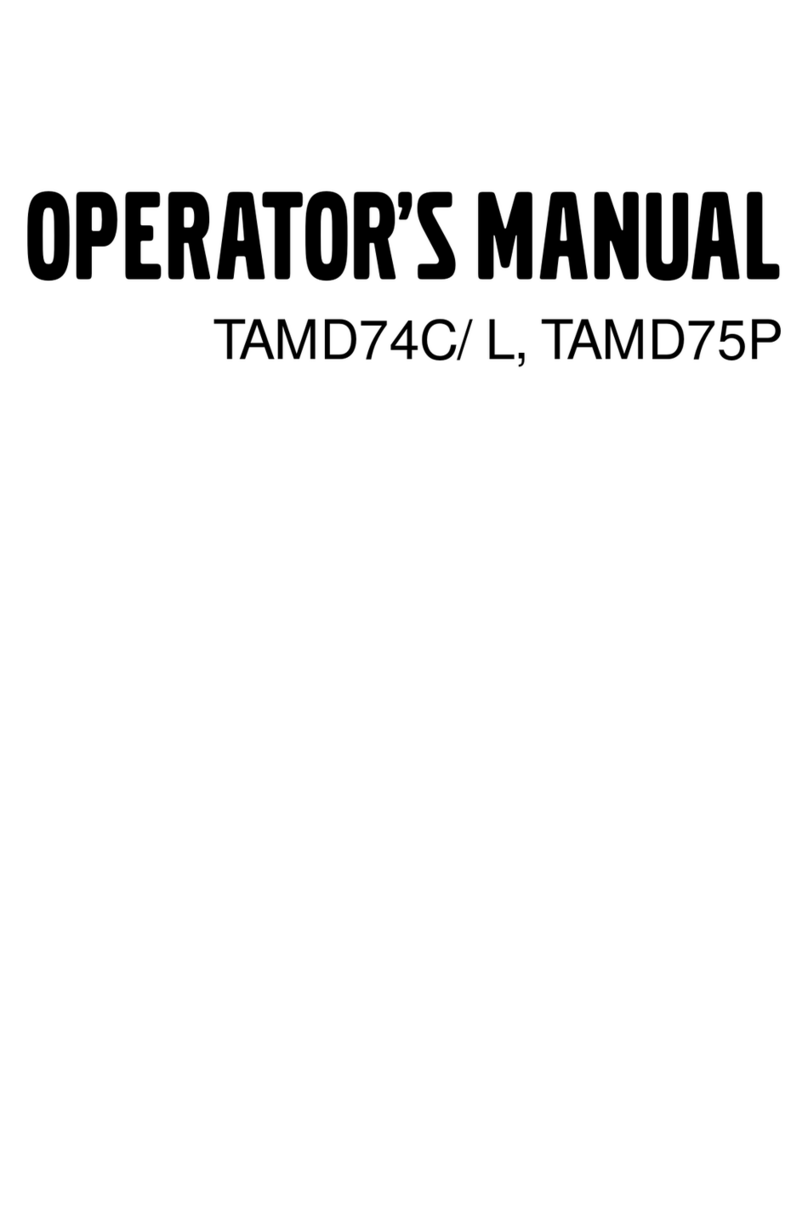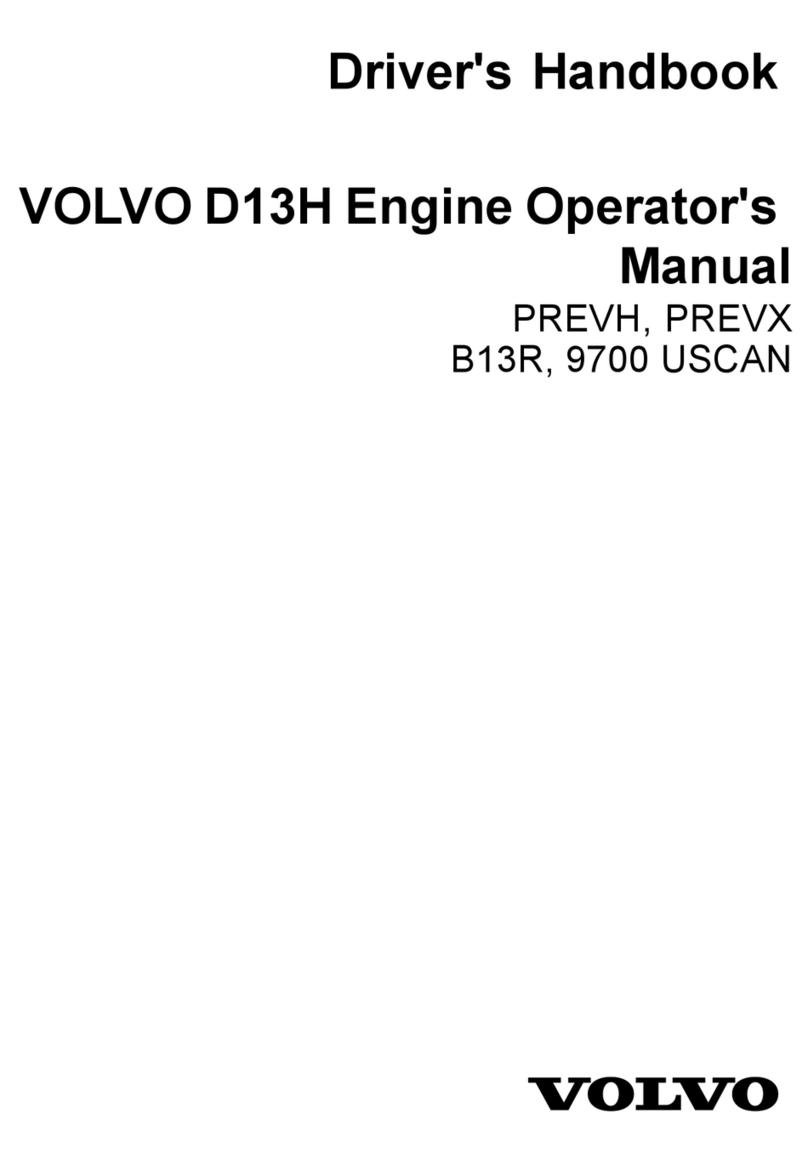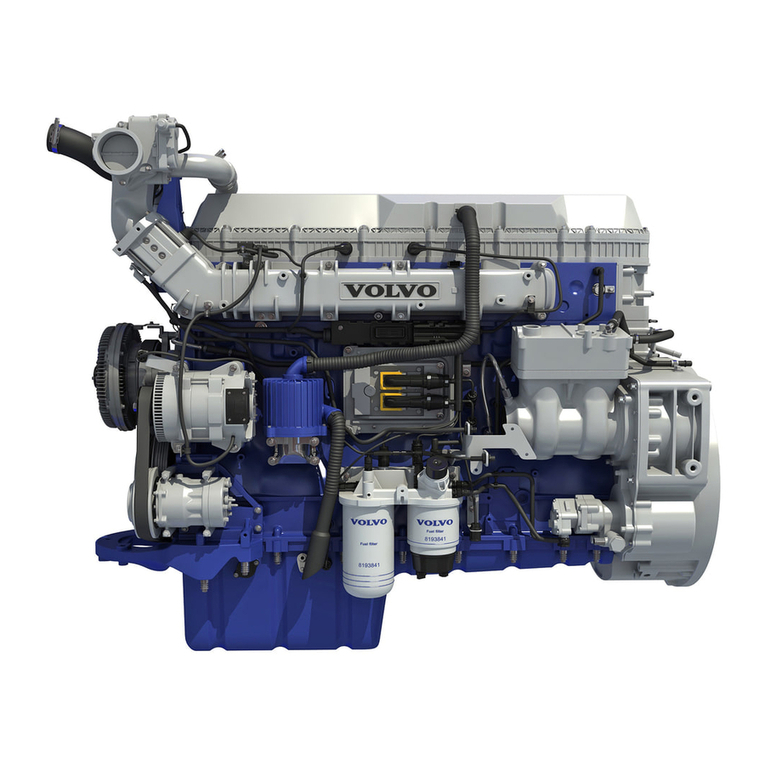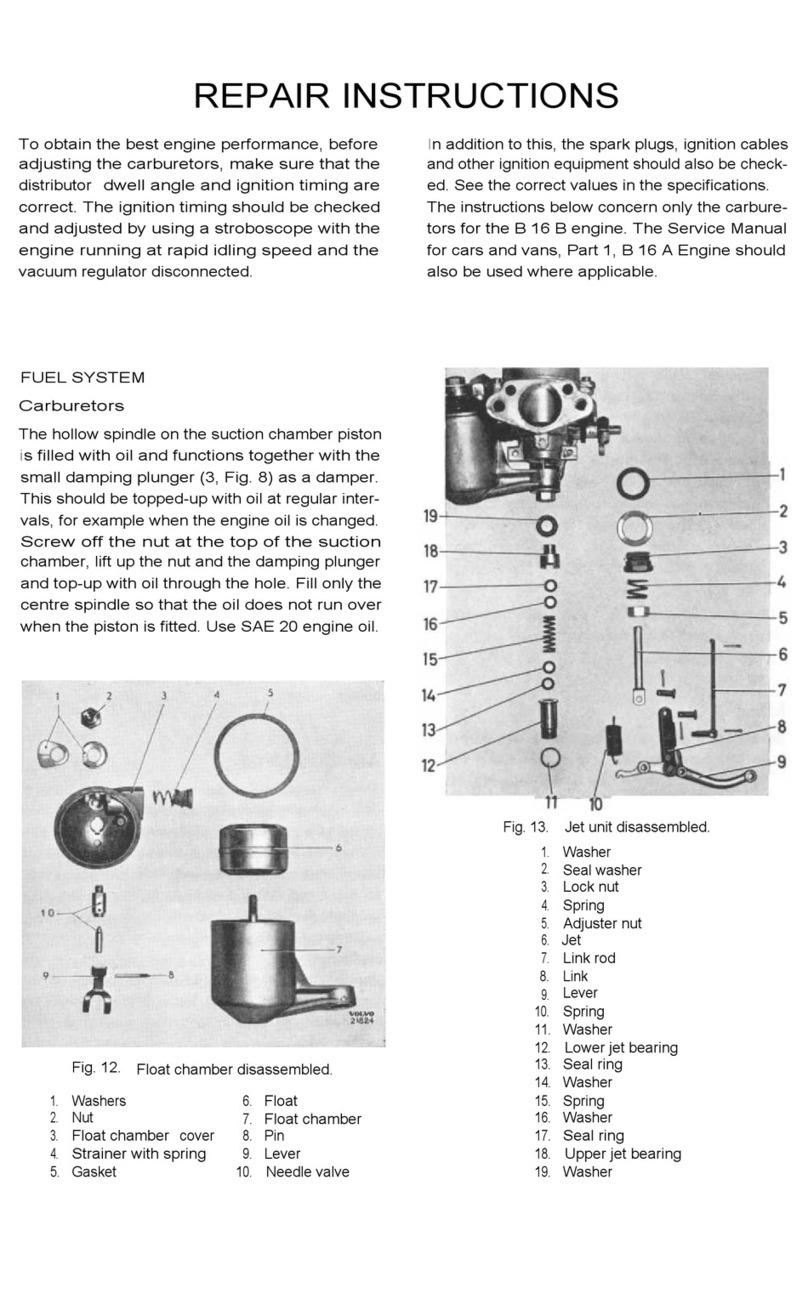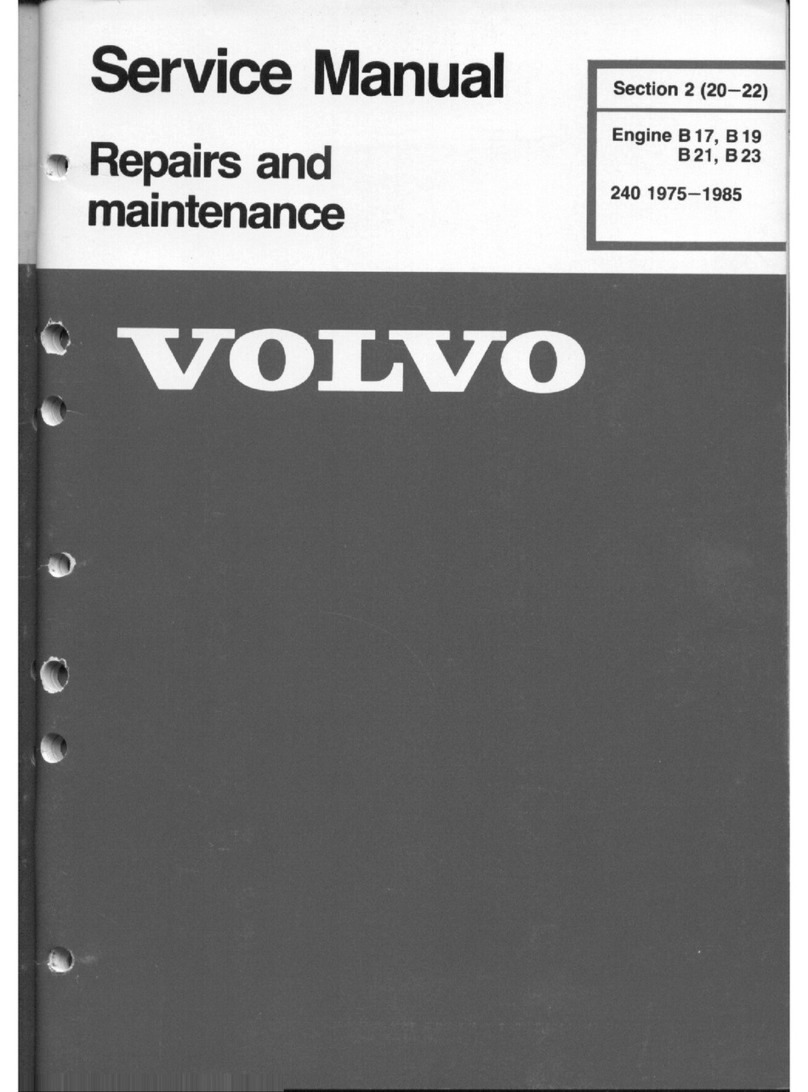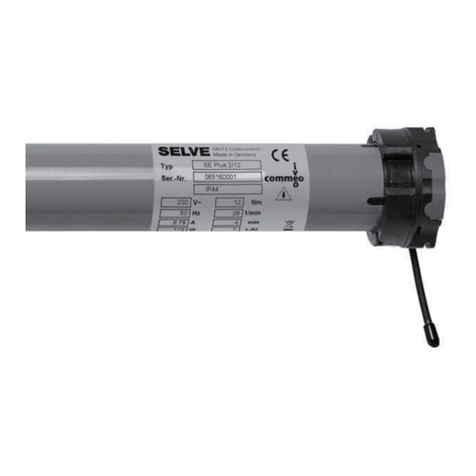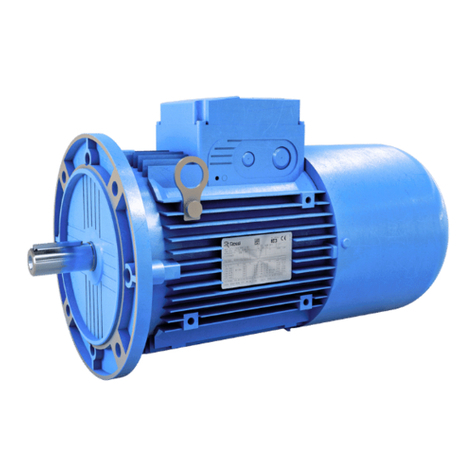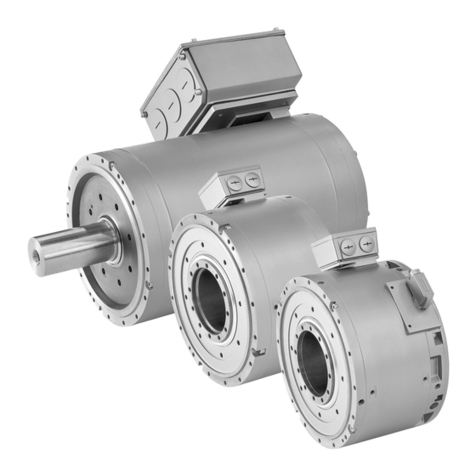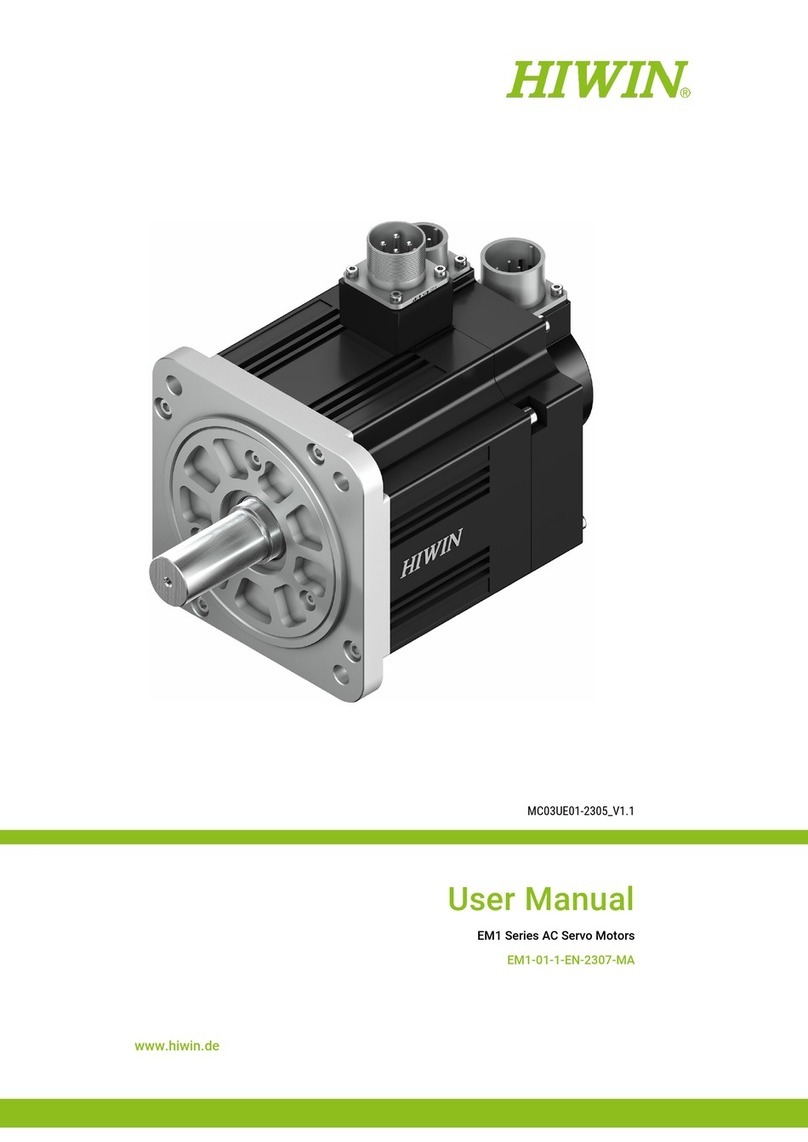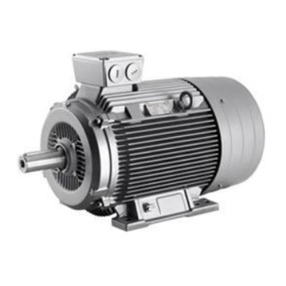
D
Volvo Trucks North America Date Group No. Page
Service Bulletin 11.2006 230 247 8(11)
To make the nozzle opening freely adjustable, a second
valve is used, the Needle Control Valve (NVC). The NVC
is a three port, two position valve, located between the
high pressure fuel line, the low pressure fuel line and a
needle backing chamber. The valve controls the pressure
in the backing chamber by either connecting the chamber
to the high pressure line or to the low pressure fuel line.
Pressure in the chamber exerts force on the back of the
nozzle by the control piston. The diameter of the control
piston is the same as the needle guide diameter so that
when the needle is off the needle seat, pressure balance
is achieved. When the needle is on the needle seat, the
effective area on the lift side is reduced and, with the
same pressure acting on both sides, there is a net force
keeping the needle on the needle seat.
The force equation is:
•Pressure x control piston area + spring force acts to
keep the needle closed.
•Pressure x lift area acts to open the needle.
With the same pressure acting on both areas, the acting
force is spring force plus the pressure force do to the
difference of the two effective areas. This keeps the
needle closed.
When the desired pressure in the needle chamber is
achieved, the NCV is activated, closing the high pressure
line to the back of the needle control piston and at the
same time connecting the back of the piston to the low
pressure line. The high pressure on the back of the
needle control piston is removed and the pressure on the
lift side now overcomes the closing force from the needle
closing spring and the needle opens.
In this way, the Needle Opening Pressure (NOP) can be
varied between the preset spring NOP and the maximum
pumping pressure. Practically, the levels used are
between 250–1800 bar, to be compared with a common
nozzle, using 250–350 bar opening pressure.
The influence on spray formation is such that the soot/PM
formation is lowered with increased needle opening
pressure, at the same time as the NOx formation is
increased.
By a clever use of variable NOP over the speed/load ma
for the engine, it is possible to balance with trade-off
between the PM/NOx formation to achieve the best
combination for each speed/load point and thus decrease
engine exhaust emissions.
